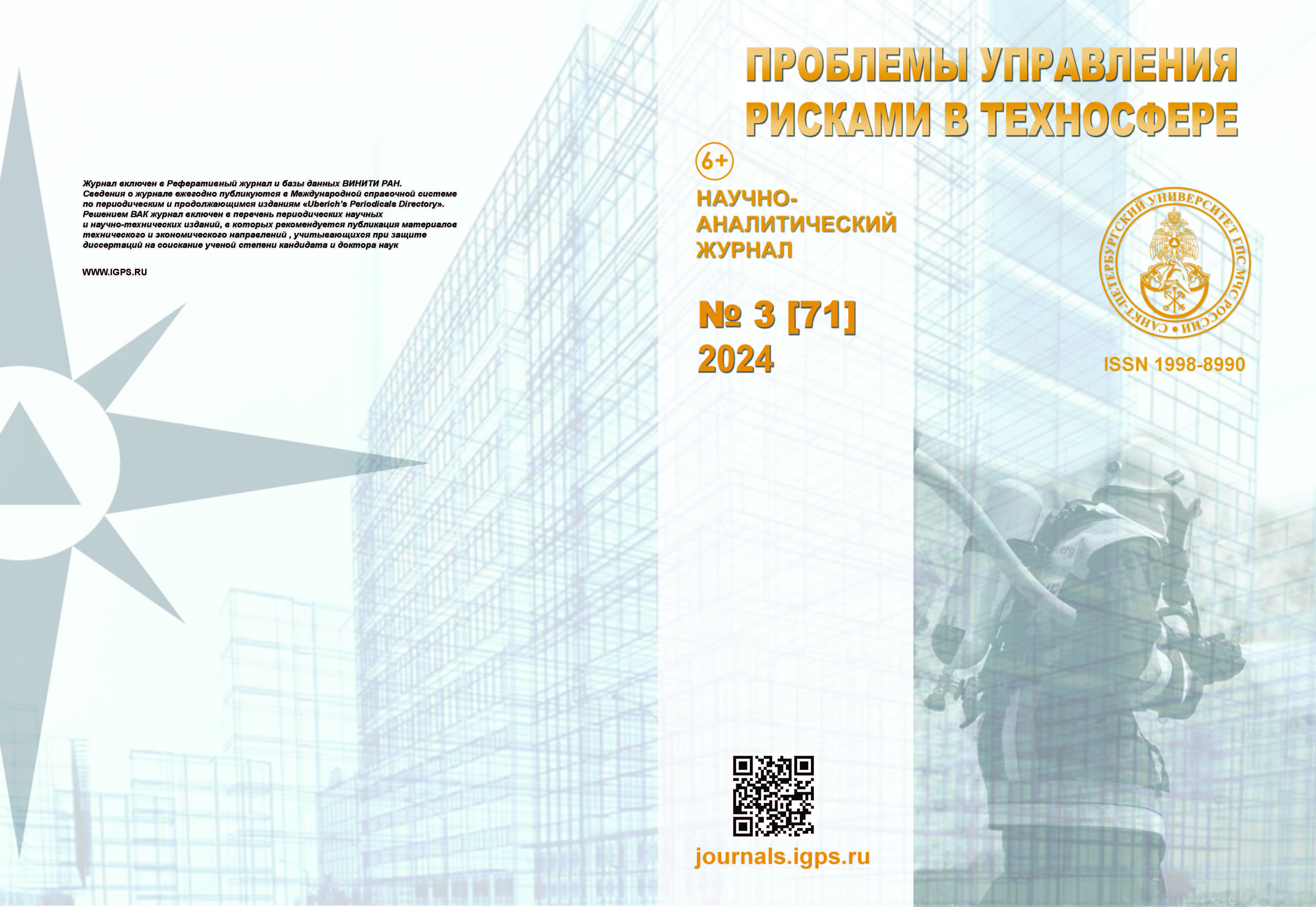Russian Federation
Russian Federation
Russian Federation
The purpose of this study was to identify patterns of tendency in changes in the electrical resistivity of charred residues depending on the temperature and duration of the carbonization process in polymers, using the example of oriented chipboard, massively used in construction. OSB slabs are called materials of the future by experts in the field of construction, since their physical properties are superior to those of ordinary wood, as well as the cost of such slabs is lower than structural wooden elements. The study of carbonized residues of polymer materials by the resistive method refers to the methodology of instrumental studies of objects at the fire site. The obtained values of electrical resistance will help the fire technical expert (specialist) in the production of fire technical expertise to identify the places of the greatest and least thermal and temporary effects, which will further help him in establishing the source of the fire.
polymer materials, fire, resistive method, fire technical expert
1. Aktual'nost' razvitiya ekspertnyh issledovanij po ocenke ushcherba ot pozhara (vzryva) / Yu.N. Eliseev [i dr.] // Vestnik Voronezhskogo instituta FSIN Rossii. 2019. № 2. S. 134–136.
2. Fedorov P.A., Tuhvatshin S.V. Perspektivy razvitiya proizvodstva OSB plit v Rossii // Teoriya i praktika sovremennoj nauki. 2018. № 5 (35). S. 862–865.
3. Vojnova N.V., Postoj L.V. Vliyanie sostava plit OSB na ih ekologichnost' i bezopasnost' primeneniya v stroitel'stve // Privolzhskij nauchnyj vestnik. 2015. № 2 (42). S. 19–23.
4. Tarasov M.A. Aspekty primeneniya polimernyh stroitel'nyh materialov vo vnutriotdelochnyh rabotah // Nauchnyj zhurnal molodyh uchenyh. 2023. № 3 (33). S. 47–52.
5. Plotnikov S.M., Rudenko B.D., Savel'eva V.G. Sovershenstvovanie poperechnogo orientirovaniya chastic v plitah OSB // Aktual'nye problemy lesnogo kompleksa. 2012. № 32. S. 96–99.
6. Bogdanova V.V., Kobets O.I., Buraja O.N. Directional regulation of the fire-protective and extinguish efficiency of n-p-containing fire retardants in synthetic and natural polymers // Combustion and Explosion. 2019. Vol. 12. № 2. S. 106–115.
7. Gur'ev V.V., Nikitin V.I., Kofanov V.A. Investigation of heat-humidity transfer in high-porous gas-filled polymers to calculate its heat conductivity // International Journal for Computational Civil and Structural Engineering. 2019. Vol. 15. № 1. S. 67–77.
8. Research and development of effective compositions of anti-corrosion composite polymer materials and coatings / S. Negmatov [et al.] // Universum: tekhnicheskie nauki. 2023. № 3–5 (108). S. 52–58.
9. Glukhikh V.V., Shkuro A.E., Krivonogov P.S. The effect of chemical composition on the biodegradation rate and physical and mechanical properties of polymer composites with lignocellulose fillers // Bulletin of the Karaganda University. Chemistry Series. 2021. № 3 (103). S. 83–92.
10. Ignition of cellulosic materials: measurement of characteristics of ignition / A.V. Kargin [et al.] // Butlerovskie soobshcheniya. 2015. Vol. 42. № 6. S. 17–24.
11. Drobysh A.S., Kudryashov V.A. Issledovanie na goryuchest' stroitel'nyh materialov iz polimernyh kompozitov // Problemy obespecheniya bezopasnosti pri likvidacii posledstvij chrezvychajnyh situacij. 2013. № 1-1 (2). S. 74–75.
12. Cheshko I.D. Rassledovanie i ekspertiza pozharov: metod. posobie. M.: VNIIPO MCHS Rossii, 2004. S. 455.








